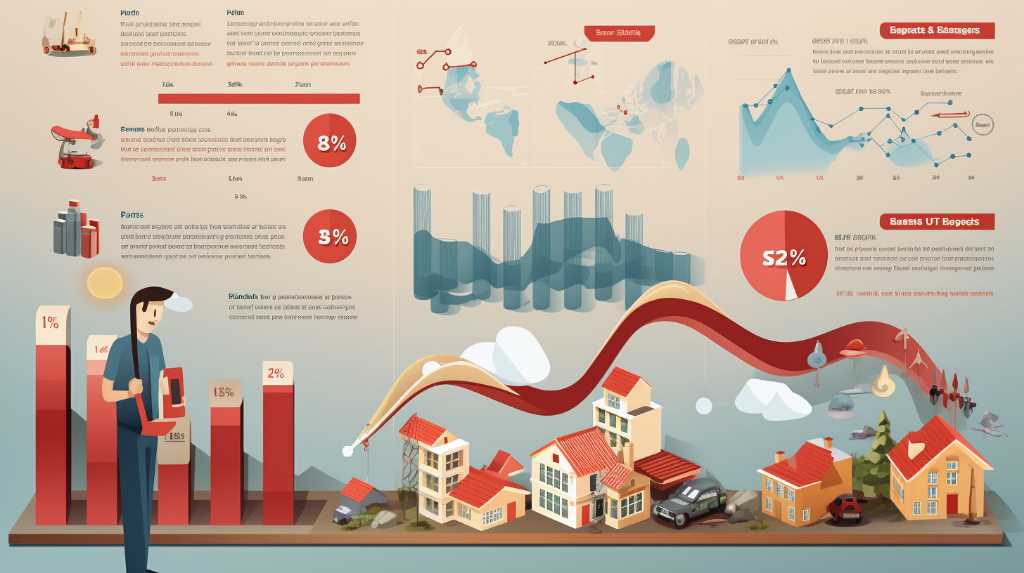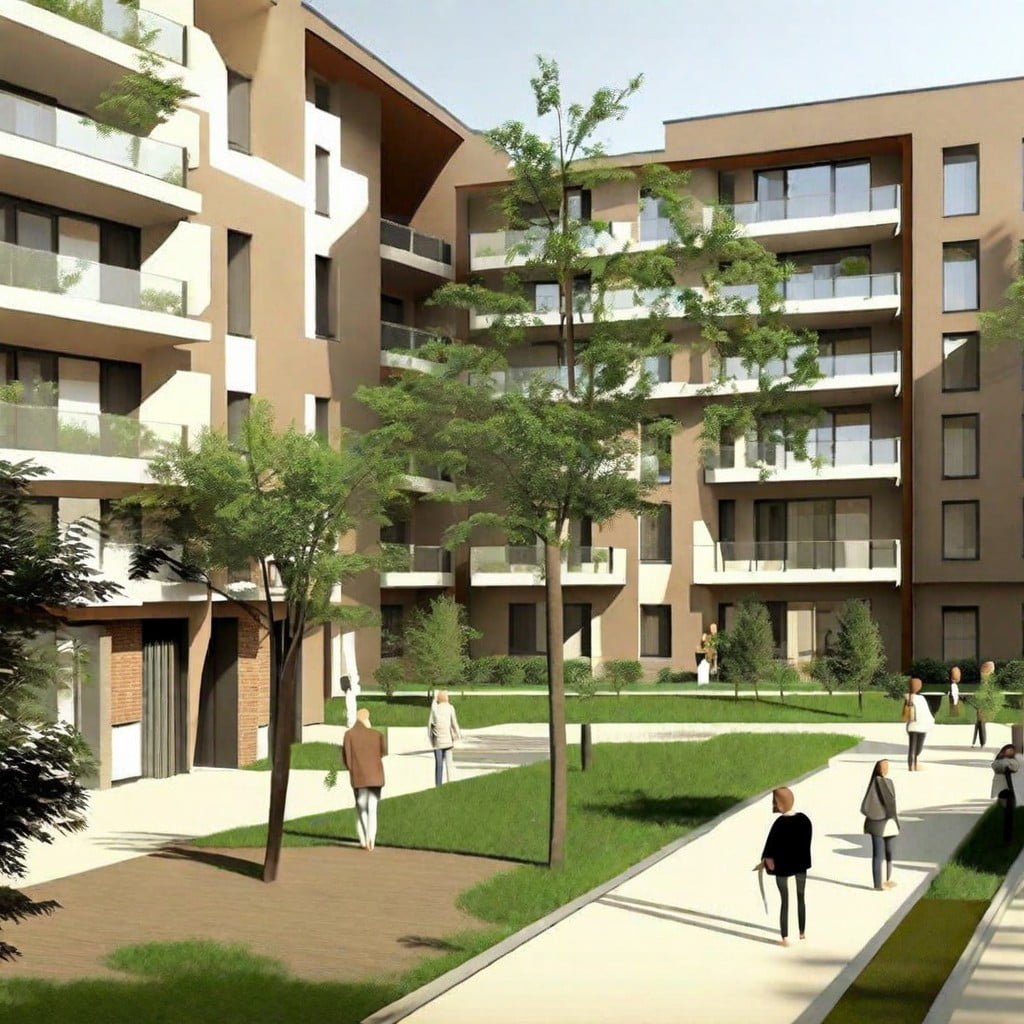Understanding Real Estate Cycles: 8 Economic Indicators Every Investor Should Monitor

What are the Economic Indicators Every Investor Should Monitor
In this article, we will learn about the economic indicators every investor should monitor. As they say, knowledge is power, and in the realm of real estate investing, it’s your ticket to freedom. You’re aiming to navigate the market’s ebbs and flows with finesse, and that means keeping your finger on the pulse of the economy.
To stay ahead, you’ve got to monitor eight critical economic indicators:
- GDP growth trends
- The unemployment rate
- Interest rate fluctuations
- Consumer confidence levels
- Construction activity
- Housing inventory
- Rental yield movements
- Government fiscal policies
They’re is your compass in the ever-shifting landscape of real estate. By tuning into these metrics, you’ll position yourself to make savvy decisions that align with your quest for financial independence.
GDP Growth Trends
As you analyze real estate cycles, it’s crucial to watch GDP growth trends, as they’re a primary driver of market fluctuations and property valuation. GDP growth trends serve as the pulse of the general economy, signaling the vigor or weakness of economic activity.

When GDP climbs, it generally means that the economic cycle is in an upswing, fostering job growth and boosting consumer confidence. This surge in economic activity often translates to a robust real estate market. People have more money in their pockets, businesses expand, demand for space rises, and before you know it, you’re looking at a seller’s market with climbing property prices.
On the flip side, when GDP growth trends falter, the economic indicators may point to a cooling period. Job growth stalls, and employment data might reveal less stability in the workforce. This can lead to a downturn in the real estate cycle, where opportunities shift and you may find more bargaining power as a buyer.
Unemployment Rate Impact
Moving from GDP growth trends to the unemployment rate, you’ll find this metric is a critical barometer for assessing the real estate market’s vitality. The unemployment rate impact is twofold: it signals the health of the economy and directly influences your freedom to prosper through investing in real estate.
During the expansion phase of the real estate cycle, a robust job market fuels demand, driving up property values and rental rates. You’re likely to see an uptick in occupancy and leasing activity, which can translate into solid returns on your investments. It’s a time when the economy’s humming along, and the job market’s strength directly boosts the real estate sector.

Conversely, a high unemployment rate often points to a sluggish economy, where the real estate market typically faces headwinds. Reduced job security and lower consumer spending power can lead to decreased demand for housing and commercial spaces. This phase presents you with opportunities to snatch up distressed properties at lower prices, setting the stage for potential gains when the market rebounds.
Interest Rates Fluctuations
You’ll need to keep a keen eye on interest rate fluctuations, as they’re a pivotal factor in the real estate market’s ebb and flow. When interest rates are low, you’ve got the green light to fuel your property ambitions. Low rates mean cheaper mortgages, igniting a spark in demand for homes and investment properties. It’s an ideal time to buy, leveraging the affordability to expand your portfolio or step into the market.
Conversely, when interest rates are high, the cost of borrowing skyrockets, and the once bustling market might cool off. It’s a signal to potentially hold off on big purchases or to restrategize. The market cycle is closely tied to these shifts, and as the economy shifts, so should your investment strategies.
Savvy investors understand that interest doesn’t just signify cost; it’s a gauge of market temperature. As rates rise and fall, they either open doors to new opportunities or suggest it’s time to batten down the hatches. By mastering this aspect of the economic indicators, you’ll navigate the real estate seas with the finesse of a seasoned captain, ensuring your pursuit of freedom isn’t anchored down by an unanticipated market squall.

Consumer Confidence Levels
Monitor consumer confidence levels closely, as they’re a key indicator of the real estate market’s vitality and can significantly impact your investment decisions. As an investor, you understand the importance of freedom—freedom to choose when and where to invest, to seek opportunities that align with your goals, and to navigate the real estate cycle with confidence.
Consumer confidence levels serve as a beacon, shedding light on the direction of the market and guiding you through the housing market cycle with foresight.
These economic indicators reflect public sentiment, and when they soar, you’ll often witness a surge in property demand. Conversely, a dip signals caution, suggesting that it might be time to hold steady or reconsider your strategies. A savvy real estate agent knows that market analysis isn’t just about numbers; it’s about understanding the mood of potential buyers and sellers.
Stay informed about shifts in consumer confidence levels, and you’ll be equipped to anticipate changes in the market. This insight empowers you to act decisively, securing your position as a proactive, not reactive, player in the game of real estate.

Embrace the freedom that comes with knowledge, and let consumer confidence levels be your guide to smart, strategic investment moves.
Construction Activity Data
Tracking construction activity gives you a direct insight into the real estate market’s current phase, helping you pinpoint investment opportunities and risks. As you navigate the Real Estate Cycle, it’s crucial to watch for upticks in new construction. These spikes often signal a burgeoning market in both commercial and residential real estate sectors. During the expansion phase, for instance, you’ll see a surge in construction reflecting high demand and growth potential.
As an investor, you must stay vigilant. The recovery phase could present lucrative chances to snap up properties at below-market values, and construction activity data is your early warning system for this turn in the cycle. Conversely, a flood of new projects during the hyper supply phase may warn you of an impending market saturation, guiding you to hold off on major purchases or new developments.
For property management, this data isn’t just numbers—it’s a strategic tool. It informs when to make capital improvements, ensuring your properties align with the market’s rhythm. Keeping an eye on construction trends, you’ll harness the freedom to make informed decisions, to act rather than react, and to align your investment strategies with the ever-shifting phases of the real estate cycle.

Housing Inventory Metrics
In light of construction activity, it’s essential you keep tabs on housing inventory metrics to accurately gauge market conditions and make well-informed investment choices. These metrics are a beacon, shedding light on the phases of the real estate cycle. They empower you with the freedom to navigate the residential real estate markets with confidence.
Grasping the ebb and flow of the average real estate cycle hinges on understanding inventory levels. A low inventory suggests a seller’s market, often synonymous with the expansion phase, where demand outstrips supply, and prices are generally on the rise. On the flip side, if you’re noticing a glut of homes for sale and a spike in months of inventory, brace yourself. This could signal a recession phase in the housing market, potentially leading to price adjustments.
Pay close attention to vacancy rates too. They offer you clues about the market’s health. Low vacancy rates typically mean rental demand is high, which could be an opportune time to increase rents. High vacancy rates, however, may indicate an oversupplied market, demanding strategic pricing to attract tenants.
Rental Yield Movements
As an investor, you should watch rental yield trends to gauge where properties stand in the real estate cycle. Rental yield movements are powerful economic indicators that reveal much about the current phase of the property market. When you spot stagnant rent growth during a recovery phase, it’s your cue to act swiftly. This can be a golden opportunity to secure properties at below-market values before the market rebounds.

As the cycle progresses to the expansion phase, heightened demand sparks rent growth, offering you the chance to benefit from both rental income and capital appreciation. It’s the freedom to optimize your investment strategy in real-time, aligning with the market’s upward trajectory.
But keep a close eye on the hyper supply phase. When you notice rental rates plateauing or even dipping, it’s a sign that the market could be oversaturated. This phase requires a strategic approach to protect your income performance and consider exit strategies if necessary.
Government Fiscal Policies
You need to keep a close eye on tax incentives as they can directly affect your bottom line by altering investment appeal.
Be aware of how infrastructure spending not only shapes communities but also potentially boosts property values.

Lastly, stay alert to regulatory changes, as they can rapidly shift the dynamics of supply and demand in the real estate market.
Tax Incentives Impact
To effectively navigate the real estate market, it’s essential to monitor how various tax incentives influence property values and investment trends. Understanding how tax incentives impact the Real Estate Cycle can help you seize opportunities that others might miss.
Tax deductions and credits are tools that can significantly sway the market. These fiscal instruments often alter buyer behavior, leading to shifts in property rates.
By keeping a pulse on these incentives, you’re more likely to capitalize on market movements in your favor. Whether it’s leveraging tax credits for renovations or deductions for interest payments, these benefits can make a substantial difference in your investment strategy.

Always stay informed, as these policies can shift with changing government priorities, directly affecting your path to financial freedom.
Infrastructure Spending Effects
In monitoring the ebb and flow of real estate cycles, you’ll find that government infrastructure spending is a key economic indicator to watch. As you navigate the Stages of The Real Estate Cycle, remember that infrastructure spending effects can signal a shift in the economy, often preceding a phase of the real estate market that’s ripe for investment. By driving property rates up in developed areas, these fiscal policies can mitigate the effects of a recession and spur growth.
You’re empowered to make savvy decisions when you understand how infrastructure projects carve out new opportunities in the real estate landscape. Keep an eye on these fiscal maneuvers—they’re more than just government actions; they’re beacons guiding your next strategic move towards freedom in property investment.
Regulatory Changes Dynamics
Monitoring changes in government fiscal policies is vital for you as an investor to anticipate shifts in the real estate market. The regulatory changes dynamics can alter property rates significantly.

When authorities implement tax deductions or provide subsidies, they’re essentially handing you a key to unlock greater value in both commercial and residential real estate. Your keen eye on these shifts ensures you’re not caught off guard and can position your investments to benefit from the earliest phases: recovery.
Staying informed allows you to navigate the Real Estate Cycle more effectively. Collaborate with real estate professionals who’ve a pulse on legislation; their insights can guide your decisions, ensuring you capitalize on government fiscal maneuvers that support your pursuit of freedom and prosperity in the market.
Frequently Asked Questions
What Are the Real Estate Economic Cycles?
You’ll navigate real estate cycles by watching housing starts trends, interest rate effects, and population growth. Urbanization, inventory levels, and construction costs also guide your freedom to capitalize on commercial development opportunities.
Which Economic Indicator Should Be Monitored to Analyze the Residential Real Estate Market?
You should monitor interest rates, employment trends, housing starts, consumer confidence, mortgage approvals, inventory levels, and construction costs to effectively analyze the residential real estate market and seize your financial freedom.
During Which Phase of the Real Estate Economic Cycle Would the Smart Investor Look to Buy Property?
You’d buy property during the recovery phase, where market timing and financial analysis show a buyer’s market. It aligns with your investment strategy, minimizes risk, and leverages positive property valuation and market sentiment.
What Phase of the Real Estate Cycle Are We in 2023?
You’re navigating 2023’s real estate cycle with finesse, eyeing housing market trends and demographic shifts. Interest rates, construction, inventory, employment, and global economics dictate you’re in an evolving phase—critical for maximizing your investment freedom.
Conclusion
You’ve now got the tools to stay ahead of the game in real estate investing. By keeping your finger on the pulse of these eight economic indicators, you’ll navigate the market like a seasoned pro.
Don’t forget, timing is everything, and knowledge is power. So, keep an eagle eye on trends and adjust your sails as the economic winds change.
With this savvy approach, you’re set to ride the waves of real estate cycles to success.








3 Comments
Comments are closed.